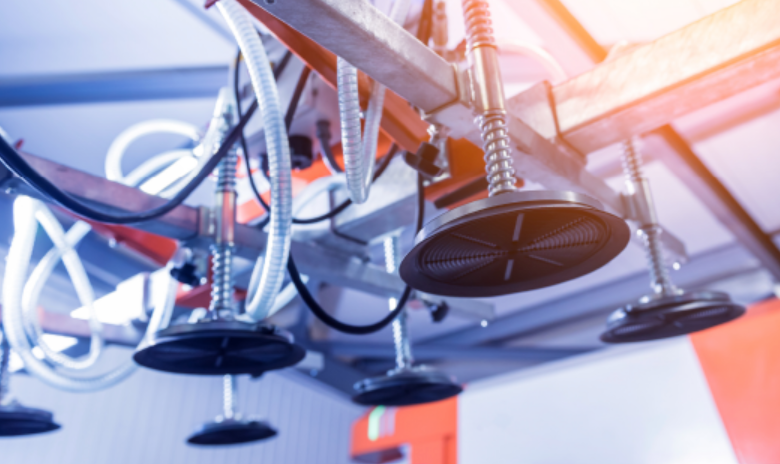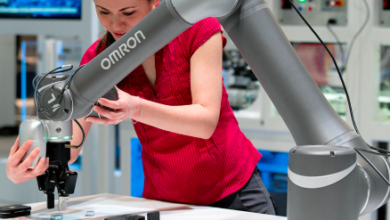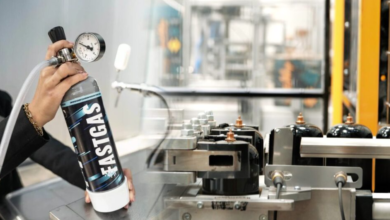What Is Vacuum? Discover How It Powers Innovation and Automation

Many people wonder what is vacuum and why it plays such a vital role in modern technology and automation. In simple terms, a vacuum is a space with pressure lower than the surrounding atmosphere, allowing engineers and manufacturers to manipulate materials and processes with incredible precision. From semiconductor production to robotics and packaging, understanding what vacuum is and how it’s harnessed reveals how this invisible force drives innovation, efficiency, and advancement across countless industries.
What is Vaccum?
A vacuum is a space where the pressure is lower than the atmospheric pressure. In other words, it’s a region with fewer air or gas molecules than normal air. The lower the pressure, the stronger the vacuum.
Key Concepts
- Atmospheric Pressure – The pressure exerted by the weight of air in the atmosphere.
- Vacuum Pressure – The pressure below atmospheric pressure. It is often measured in units such as millibar (mbar), torr, or inches of mercury (inHg).
- Absolute vs. Gauge Pressure
Absolute Pressure: Measured relative to a perfect vacuum (0 pressure).
Gauge Pressure: Measured relative to atmospheric pressure.
Applications of Vacuum
- Evaporation and distillation in chemical processes.
- Packaging food and pharmaceuticals.
- Laboratory experiments require controlled conditions.
- Maintaining efficiency in steam turbines and power generation.
Levels of Vacuum and Their Applications
A vacuum is a space where the air pressure is lower than normal atmospheric pressure. Different levels of vacuum are used for various industrial and scientific purposes.
Atmospheric Pressure
Pressure: 760 Torr (101 kPa)
- Air molecules: 2.5 × 10²⁵ per m³
Applications: This is the air pressure we experience in our everyday environment. It’s the standard reference used to compare other pressure levels in weather, science, and industry.
Low (Rough) Vacuum
Pressure: 25 – 760 Torr (3 kPa – 100 kPa)
- Air molecules: 8 × 10²³ – 2.5 × 10²⁵ per m³
Applications: Commonly used in food packaging, vacuum forming, and material handling, where moderate suction or air removal is enough to protect products or shape materials.
Medium Vacuum
Pressure: 0.001 – 25 Torr (0.1 Pa – 3 kPa)
- Air molecules: 3 × 10¹⁹ – 8 × 10²³ per m³
Applications: A medium vacuum has less air than a rough vacuum, creating cleaner conditions. It’s commonly used in labs, freeze-drying, and vacuum distillation. This level of vacuum allows faster drying or evaporation while protecting materials from high heat.
High Vacuum
Pressure: 10⁻⁹ – 0.001 Torr (100 nPa – 0.1 Pa)
- Air molecules: 3 × 10¹³ – 3 × 10¹⁹ per m³
Applications: A high vacuum removes nearly all air and gas, creating extremely clean and controlled conditions. It’s used in advanced technologies like semiconductor production, electron microscopes, and thin-film coating, where even tiny contaminants can affect performance.
Ultra-High Vacuum (UHV)
Pressure: 10⁻¹² – 10⁻⁹ Torr (100 pPa – 100 nPa)
- Air molecules: 3 × 10¹⁰ – 3 × 10¹³ per m³
Applications: PUHV is used in advanced scientific research where extreme cleanliness and minimal air are crucial, such as in particle accelerators and atomic-level studies.
Extremely High Vacuum (XHV)
Pressure: < 10⁻¹² Torr (< 100 pPa)
- Air molecules: < 3 × 10¹⁰ per m³
Applications: XHV is used in space simulation to replicate outer space conditions and in advanced physics experiments where even the tiniest amount of gas could interfere with results.
The higher the vacuum, the fewer air molecules remain. Different vacuum levels require specific equipment and are suited for different industries, from simple packaging to cutting-edge scientific research.
See also: OSHA Crane Regulations: A Practical Guide to Compliance on Construction Sites
Advantages of Using a Vacuum in Industry
- Faster and More Efficient Processes
Using a vacuum speeds up operations like drying, distillation, and solvent removal by lowering the pressure, which reduces the boiling point of liquids. This shortens production time and increases output, making industrial processes more efficient. - Better Product Quality and Preservation
Vacuum environments allow processes to occur at lower temperatures, protecting heat-sensitive materials like food and pharmaceuticals. They also reduce contamination and oxidation, helping maintain purity, flavor, color, and overall quality.
- Energy Savings and Cost-Effectiveness
Vacuum processes often require lower temperatures, which reduces energy use. A centralized vacuum system can power several machines at once, which means fewer pumps are needed. This helps reduce maintenance, save energy, and lower overall operating costs.
- Versatility and Cleanliness
Vacuum systems create clean, controlled environments for sensitive manufacturing. They also help remove trapped gases from materials (degassing) and are useful for tests like checking for leaks or speeding up aging processes.
Vacuum technology makes industrial processes faster, cleaner, safer, and more energy-efficient. It enhances quality, speed, and efficiency in high-tech manufacturing.
Innovations and Trends
- Smart Sensors, IoT & Predictive Maintenance
Modern vacuum systems use sensors and AI to monitor pressure, temperature, and usage. This helps detect problems early, prevent unexpected breakdowns, and keep the system running reliably.
- Energy Efficiency & Sustainability
Modern ejector systems are energy-efficient and eco-friendly. They use less air or steam, adjust speed based on demand, and can recover heat or energy to cut costs or reduce environmental impact.
- Compact, Modular & Multi-Stage Designs
Ejectors with modular, compact designs are easier to install and expand. Multi-stage ejectors can achieve deeper vacuums while fitting into smaller spaces.
- Advanced Materials & Coatings
Using materials like ceramics, special alloys, and wear-resistant coatings allows ejectors to handle corrosive gases and high temperatures. Improved nozzle designs also boost efficiency and extend their lifespan.
Why This Matters
- Expect new vacuum systems to be smarter, more efficient, and modular.
- Innovations reduce maintenance, extend service life, and cut energy costs.
FAQ: Common Questions About Vacuum
1. What is a vacuum?
A vacuum is a space with very little or no matter, like air or gas. Because it has fewer particles than normal air, its pressure is lower than the surrounding environment. This makes vacuums useful in science experiments and industrial processes where controlling pressure matters.
2. What counts as a vacuum?
Any space with pressure lower than normal atmospheric pressure (101.3 kPa or 760 Torr) is considered a vacuum. There are levels of vacuum:
- Low vacuum: Slightly below atmospheric pressure.
- High vacuum: Very few particles remain.
- Ultra-high vacuum: Almost empty, used in advanced research and space simulations.
3. What is a vacuum in space?
A vacuum in space is an area with extremely low pressure and very few particles. It’s not completely empty, but the density of gas and matter is so low that it’s far more extreme than any vacuum we can create on Earth.
4. What does vacuum mean in terms of pressure?
A vacuum is any pressure below 1 atmosphere. It can be measured in:
- Torr or mmHg: Common in labs.
- Inches of Mercury (inHg): Used in automotive and HVAC systems.
- Pascals (Pa): Standard SI unit for engineering and science.
5. How is a vacuum created?
A vacuum is made by removing air or gas from a space. Common methods include:
- Mechanical pumps: Rotary, diaphragm, or piston pumps for low to medium vacuum.
- Diffusion or turbomolecular pumps: For high and ultra-high vacuum.
- Ejector systems: Use compressed air or steam to create a vacuum.
- The method depends on the vacuum level and the application.





